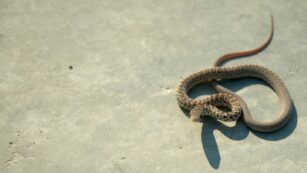In the captivating world of herpetology, baby snakes, often referred to as hatchlings or neonates, hold a unique charm that fascinates both enthusiasts and casual observers in online retail stores. These tiny, slithering creatures emerge from their eggs with an innate survival instinct, ready to navigate the vast and complex ecosystems they call home. Despite their small size, baby snakes are equipped with remarkable adaptations that ensure their survival from the moment they take their first breath.
Understanding the life cycle of these young reptiles offers valuable insights into their behavior, growth, and the challenges they face in the wild. From their diet and habitat preferences to their predator avoidance strategies, baby snakes exhibit a fascinating array of characteristics that contribute to their resilience. Whether one is an aspiring herpetologist or simply curious about these intriguing creatures, exploring the world of baby snakes reveals the intricate balance of nature and the marvels of evolution.
Baby:Xplki1ffmew= Snake
 Baby snakes, known as hatchlings or neonates, thrive through special adaptations enabling survival right after hatching. Each hatchling exhibits instinctual behaviors essential for navigating their immediate environment. They’re usually born independent, possessing innate skills to seek food and avoid predators.
Baby snakes, known as hatchlings or neonates, thrive through special adaptations enabling survival right after hatching. Each hatchling exhibits instinctual behaviors essential for navigating their immediate environment. They’re usually born independent, possessing innate skills to seek food and avoid predators.
Adaptations and Behavior:
Hatchlings rely heavily on camouflage and cryptic coloration for predator evasion. Their instinctual ability to remain motionless when danger is near reduces detection chances. These adaptations are crucial in the wild, where threats are numerous.
Diet and Feeding Habits:
Hatchlings primarily eat small prey items, such as insects and tiny rodents, depending on the species. Their precocial nature means they can hunt shortly after birth. This diet sustains their rapid growth in the early stages of life.
Habitat Preferences:
These young reptiles often start life in sheltered nest sites, which provide immediate protection. As they grow, they explore varied environments, adapting to diverse habitats like forests, grasslands, or deserts, contingent on species-specific needs.
Appearance And Habitat
Physical Characteristics and Natural Habitat
 Hatchlings are typically small, ranging from 4 to 12 inches in length, depending on the species. Their skin is often more vibrant than that of adult snakes, featuring bright patterns or colors that provide effective camouflage. This coloration aids in blending with the surroundings to avoid predators. Most baby snakes have fully formed scales and a muscular physique, enabling efficient movement, whether slithering on the ground or climbing.
Hatchlings are typically small, ranging from 4 to 12 inches in length, depending on the species. Their skin is often more vibrant than that of adult snakes, featuring bright patterns or colors that provide effective camouflage. This coloration aids in blending with the surroundings to avoid predators. Most baby snakes have fully formed scales and a muscular physique, enabling efficient movement, whether slithering on the ground or climbing.
Neonates adapt to a variety of habitats, also determined by species. Some prefer dense forests, where leaf litter and thick vegetation offer ideal hiding places. Others inhabit deserts, utilizing sand and sparse plants for concealment. Grasslands and marshes provide rich hunting grounds, with tall grasses offering protection and opportunity. In all environments, these habitats supply necessary resources such as prey and protection from threats, ensuring young snakes can grow and thrive.
Behavior And Temperament
 Baby snakes exhibit behaviors crucial for survival from birth. Instinct drives these hatchlings to remain motionless when threatened, effectively using camouflage. Hunting begins shortly after hatching, focusing on small prey like insects.
Baby snakes exhibit behaviors crucial for survival from birth. Instinct drives these hatchlings to remain motionless when threatened, effectively using camouflage. Hunting begins shortly after hatching, focusing on small prey like insects.
Temperament varies among species. Some baby snakes might be more defensive, issuing warning displays when approached. Others exhibit shy tendencies, opting for retreat over confrontation.
Interactions with their environment are instinctive. They explore surroundings with heightened caution, guided by innate survival strategies. Though born solitary, their independence is essential for mastering individual survival skills.
Care Requirements
 Understanding the care requirements of baby snakes is crucial for their survival and well-being. These young reptiles need an environment that mimics their natural habitat, ensuring proper temperature, humidity, and hiding spots. A secure enclosure with appropriate substrate and foliage provides them with necessary shelter and stimulation.
Understanding the care requirements of baby snakes is crucial for their survival and well-being. These young reptiles need an environment that mimics their natural habitat, ensuring proper temperature, humidity, and hiding spots. A secure enclosure with appropriate substrate and foliage provides them with necessary shelter and stimulation.
Feeding is another critical aspect, as hatchlings require a diet of small prey items that match their natural preferences. Offering appropriately sized food ensures they receive adequate nutrition for growth. Regular monitoring of their health and behavior helps identify any issues early on.
Handling should be minimal to reduce stress, allowing them to acclimate to their surroundings. By respecting their instinctual needs and providing a suitable environment, caregivers can support the development and thriving of baby snakes, fostering a deeper appreciation for these fascinating creatures.

